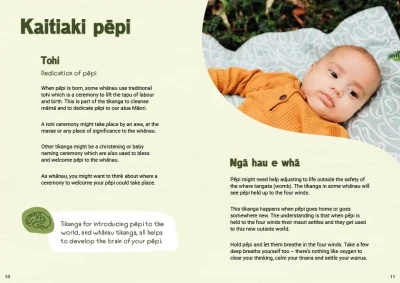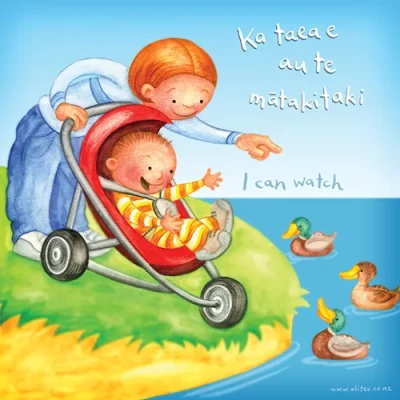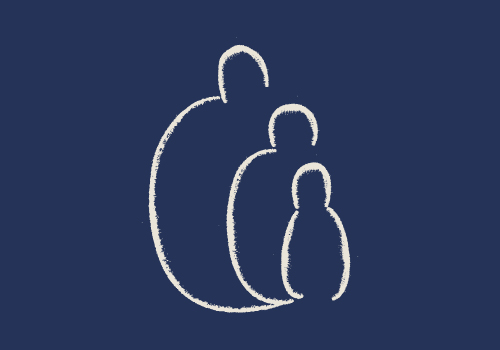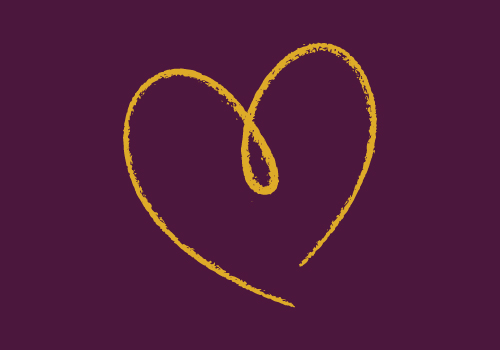[Music]
[Graphic: Counties Manukau – Health logo]
[Text on screen: He Whakaaturanga Presents]
[Text on screen: Aroha Atu, Aruha Mai]
[Text on screen: Ko te whakawhanaunga teetahi ki teetahi he mea haapai i te whanaketanga o taau peepi. The time you spend getting to know each other will give your baby a great start in life]
[Text on screen: Ho reo Maaori, Paakehaa hoki a Aroha Atu, Aroha Mai e tautoko ana i ngaa maatua, whaanau, maatanga hoki kia maarama ai, ki whakautu ai i ngaa hiahia whakarata, kare-aa-roto raanei a te peepi i ngaa marama 3-4 o te oranga hou.]
[Text on screen: Aroha Atu, Aruha Mai in Te Reo and English supports parents, whaanau and professionals to understand and respond to the social and emotional needs of babies in the first 3-4 months of life.]
Voiceover 1:
Wāhia te urutapunuitanga o Io Matua Kore i te wāhi ngaro
Tuwheratia ki a Ranginui
Tāmaua ki a Papatūānuku
Tauawhia te tipua e whakaata mai nei
Honoa te ira tangata, te ira Atua
Whakahokia te ngaongao, te whatumanawa ki te kōpū a te whenua
Hei muramura toha ki te wheiao, ki te ao mārama
Tēnei te nini, tēnei te nana, tēnei te poutaurori
Murua ana te whare o Uenuku
Heria kei reira te ihi tapu mana
Kua tiki kei runga
Ka whanatū ahau ki te puke i te wānanga [echo] puke I wānanga o ngā tauira.
Tūturu whiti whakamaua kia tīna
Tīna, haumie e, hui e, tāiki e
[Music and singing]
Voiceover 2:
Babies are part of a social world. Before birth they hear that world, and they sense it around them. Your baby begins to recognise voices around them before they are born.
[Music and singing]
Everyone is waiting to meet this brand-new person, and they are waiting to meet you.
Speaker 1:
As soon as he was born, he sort of gave us a very good, firm, up and down, as if to say, ‘What’s all this fuss? What’s all this about?’ I think and that’s something that stays with all of us.
Speaker 2:
Oh, I got the feeling that my baby recognised my voice from pretty much straightaway. Like, within hours of her being born she would, you know, turn towards me if I was talking; and that to me was amazing. Because, you know, just this tiny little newborn person could be able to hear first of all, and then recognise something familiar.
[Text on screen: Coraleigh, 10 hours]
Voiceover 2:
When a baby arrives into the world they are ready to connect with you. From birth, babies are able to give you cues to how they’re feeling. Quietly watching and looking at your pēpi will help you understand those cues.
Baby is looking at mum and mum is looking at her. This is called ‘mutual gaze’. Coraleigh is working hard and takes tiny rests by blinking and briefly looking away. But gazing is very tiring.
This gazing is helping your baby’s brain to grow. As your baby looks their brain cells are being switched on and connections in the brain are being built. When calm and alert your face is what your baby most wants to see in the world. So, mutual gaze is an important and enjoyable time for your baby.
[Text on screen: Dante, 10 days]
Dante is enjoying some mutual gaze time with his dad. Dante’s father helps him by supporting his head and body, and holding him quite close. Watch how Dante turns his head. He’s heard his sister entering the room. She is an important part of his world and even at this very young age he already knows his family and is keen to be with them.
Dante’s mum sees he is tired, but he is still able to manage some gazing. She lets Dante take small rests. He looks away and then comes back to her.
[Text on screen: Ngara]
Babies need to be calm, alert and still in order to have these times gazing lovingly at you. Here Ngara is really locked onto her mum’s eyes and face. We can see Ngara is ready because she is calm, focused and her body is still. Baby and mother are both discovering each other.
Ngara’s mum gently chats to her as they gaze. This helps to hold Ngara’s attention. Notice Ngara’s little mouth movements. These are the vey beginnings of speech for a baby. If you see your baby doing this, try talking to them and watch how they respond.
[Text on screen: Coraleigh, 4 weeks]
Coraleigh is now comfortable being held a little further away from mum and can hold her gaze for much longer. Notice how she very briefly looks away. A quick flick of her eyes and then refocusing on mum. Looking away and blinking even for a split second is a sign that your baby is taking a break from all that hard concentration. These little breaks and rests that babies give themselves during periods of gazing are known as self-regulation. Letting your baby take a little rest helps them to develop longer and longer periods of looking.
Coraleigh’s movements show her mum she needs a longer break. Her mum knows this and waits. A big yawn is enough. Coraleigh’s ready to gaze at mum again.
Speaker 2:
I guess I was really conscious that, you know, she’s absorbing everything, and just learning about me and me learning about her. And learning about her whānau, you know, there’s so many different and new faces. Yeah, it was quite exciting really.
[Text on screen: Catalina 8 weeks]
Voiceover 2:
Babies love looking at faces and looking is a way they communicate. Catalina is enjoying gazing at her mum. As her mum talks to her makes mouth movements, look how Catalina’s eyes flick between her mum’s eyes and her mouth. She is clearly riveted by her mum’s face.
It might feel a bit awkward at first knowing what to say to your newborn baby but what you say isn’t important. What is important is that you talk. Use a gentle friendly tone. You can just think out loud to your baby. Your baby will watch you and listen to you closely. They are learning about speech.
Notice how Catalina’s mouth is moving too. She is trying to copy her mother.
[Music]
[Singing]
Voiceover 2:
Babies enjoy many different types of stimulus and they are important for building your relationship with them.
[Text on screen: Emanuela 11 weeks]
Emanuela is enjoying listening to her parents’ music. She is alert and focused as she listens to a tune she heard before birth.
From very early babies have memories of music. You may even notice your baby responding in a special way to music they heard often when in the womb.
This family’s baby hasn’t been born yet but the baby can hear their brother and sister singing.
[Singing]
And watch what happens when they finish.
Speaker 3:
He’s moving now.
Speaker 4:
Wait, wait, wait.
Speaker 3:
This side.
Speaker 4:
Is it actually moving?
Speaker 3:
Yeah.
Matua Te Hira:
And oriori was a type of lullaby, and the oriori was a way and means of from the grandparents to pass it down to the new parents of becoming parents. It was a way of sharing that aroha, that love. This is just one little oriori that I grew up with.
He pouhihiri, he pourarama
He pouhihiri, he pourarama
Tiaho mai i roto i te ao, i te po
I roto i te poutokomanawa
Huia ki te rangi
Huia ki te whenua
Huia ki te ngākau
Haumie, hui e
Tāiki e
Matua Te Hira:
They said that pouhihiri was about creating the new posting in one’s relationship, in one’s life, in one’s whanau, in one’s hapu, and in one’s iwi
Voiceover 2:
Skin to skin contact and massage are other types of stimulus babies really enjoy. Here Emanuela is enjoying skin to skin contact with dad, and the feel of the water. She is settled and alert.
Rehutai is enjoying having his feet massaged, relaxed and quiet during this special time with his dad.
And Lucas really enjoys having his legs gently massaged. Gentle mirimiri can be very soothing for baby and is a good way for you both to connect. Research shows it helps parents become more sensitive to their babies.
Whaea Taui:
Mō te mirimiri, hīmata ahau i runga i te tuara. Ka takotongia a pēpi i runga i tana puku, ka mirimiri i te tuara. Te tuara me ngā pokohiwi, ngā ringaringa. Ki ngā waewae. Mō te rua miniti pea te mirimiri, me te waiata, me te waiata i ngā oriori, oriori i runga anō i taku māmā , and, ko tēnei: moemoe pēpi kaua e tangi. Hoki mai a māmā āpōpō. Tērā te oriori.
[Text on screen: I start massaging the back with baby on her tummy back, shoulders, arms, legs – for about 2 minutes. Sing waiata and oriori. I hear my mum singing moemoe pēpi kaua e tangi. Hoki mai a māmā āpōpō. Tērā te oriori]
Voiceover 2:
[Text on screen: Lucas]
Although your baby likes to be active and social it’s important to recognise their signals that they’re tired and respond as quickly as you can to help your baby settle. Although Lucas seems to be happily chatting with dad, he is actually beginning to show some early signs of tiredness. Notice his shoulders are pulled up. He’s making fists and his arms are waving in a jerky way. And here, his body stiffens. He’s making grizzly noises and keeps looking away. These are common tired signs. His father comforts and supports him by holding him close and trying not to interact. Other tired signs are pulling at ears, rubbing eyes and nose, bringing legs up to stomach or chest, and movements that are less controlled than usual. And, of course, they cry.
Lucas needs a feed before settling to sleep. Now Lucas is fed and much calmer his dad gets him ready for bed. Lucas shows another sign he is tired. He’s rubbing his nose and eyes. He’s used to this bedtime routine and knows that he’s going to be held close and calmed. Wrapping your baby can help them feel more secure. It helps them settle, control their body movements and stay asleep.
Once wrapped dad cuddles him close, sways with him and holds him gently. This is all part of Lucas’ bedtime routine, all helping him to settle and get ready for sleep. Snuggly tucked into his bassinet on his back his father helps him drift off to sleep.
Some babies settle more easily than others. Crying is an important and very effective way for babies to get your attention and tell you they need something. Working out what they need can be the hard part. You can’t always tell from the sound of their cry what they need. It takes time watching and learning the cues, the signs your baby gives you.
Crying can be very stressful and tiring for parents but it’s very important you never shake your baby. Shaking your baby can really damage their brain.
Speaker 6:
[Baby babbles]
Having a kōrero?
[Text on screen: Rehutai 6 weeks]
Voiceover 2:
Rehutai is ready for kōrero with mum.
Speaker 6:
Are you telling me something?
[Baby babbles]
Do you want to
Voiceover 2:
Titiro, watch how he uses his whole body, all his sounds, mouth movements and gaze to take turns in the conversation. And he’s having a great time.
[Baby babbles]
Speaker 6:
Yes. Hi. Rehutai have a kai, ae.
Voiceover 2:
But soon Rehutai signals he’s not happy. Again, he uses his whole body to communicate, no longer relaxed but stiff and moving about a lot. Mum responds calmly. He’s tired and ready for kai.
Feeding is another great time to communicate with your baby. Once baby is settled into their feed you can follow their cues to gaze and chat.
Fed and comfy Rehutai is ready for more conversation. Mum pokes her tongue out and notices Rehutai trying to copy. She repeats the movement and gives him time to try it himself. He is looking and concentrating very hard. Then, finally, success.
[Text on screen: Coraleigh]
Coraleigh is being very social with mum as she tells her a big, long story.
[Baby babbles]
She uses her voice, eyes and facial expressions and gesture to connect with her mum. Her whole body is involved in this conversation. Her mum waits for her to talk and gives her lots of time to make noises and tell her story. Mum is really involved, copying and repeating sounds using her face and voice to show lots of expression which keeps Coraleigh’s interest.
Mum mirrors Coraleigh’s facial expressions. This is very important. It shows Coraleigh that mum understands her feelings. How wonderful for Coraleigh’s confidence and her brain and speech development. If you speak more than one language what a gift for your baby. Use all your languages with baby.
When a new baby comes into the family everyone must make big adjustments including other children in the family. And this isn’t always easy for them no matter what their age. Being able to show them the baby knows their voice, wants to gaze and communicate with them will help children cope with the changes better. Involving brothers and sisters in the care of a newborn strengthens their relationship with the baby, and your baby enjoys an increasing circle of love and support.
Dante is enjoying a story from his sister. He concentrates hard on his sister’s face and the sound of her voice. As he listens, he responds with small blinks, mouth movements and sounds.
Nana is very responsive to both her grandchildren as they all enjoy story time together.
[Background chatter]
Caring for a newborn baby is very tiring and a lot of hard work. Things don’t always go according to plan, and it can often be very difficult working out what a baby needs or wants. You can ask for help; you don’t have to do it alone.
[Baby crying]
Whānau, friends and neighbours can help, anyone can help. We all need to support parents with new babies.
Anne Candy:
If you can look for and see that someone is crying out for help without asking, then it’s up to you to make a move to step in and offer help, so that they retain their dignity. But there’s integrity in looking after a baby and if someone needs help you can’t be sure that baby is going to be cared for as totally as it should be. So it’s up to you to make sure that if you see that that you enable that baby to have all its needs met. And sometimes it is something like, you know, a mother may not even be able to get out of bed. And you don’t know why, but you don’t have to know why. All you know is that there’s a baby that needs to be cared for too. So assist in that way. They get through it. Even if it's to go and just do all the washing and clean the house enables that mother to cope for that day or that week or that month until they’re able to manage on their own. Well, not really on their own, to manage a day by day. But it’s up to us to look for that.
Matua Whitiora:
Nō reira, i roto i tērā a koutou ngā tamāhine, taiohi. Tēnei rā mātou ngā kaumātua e mihi atu nei ki a koutou i roto i tēnei wāhanga. Nō reira, kaua e whakamā ki te tono mai he āwhina i roto i a mātou i te mea kei reira mātou i ngā wā katoa mō koutou i raro i te whakaaro nui i roto mātou i ērā āhuatanga i a mātou e tamaiti ana, e tamariki ana. Nō reira, nau mai, tono mai i roto anō i te arohatanga mō tātou katoa.
[Text on screen: Our young women and men, with this, we your elders, acknowledge you please don’t be shy to ask us for help. We will always be there for you. We were in your position once, so we welcome any request from you with open hearts]
Voiceover 2:
Babies want to be part of the world around them. They are social from birth and know how to connect with you and they love looking at your face. Loving relationships support the healthy development of your baby’s brain. Follow your baby, they give you cues. Wait until they are in the mood they will be settled and alert. Give yourself some time. Look, listen and talk to your baby. They will take part listening and gazing at you. You might see them copy your face and hear small noises. Babies like to listen to stories, songs, different languages, and you can just try thinking out loud.
Remember, they will need to take small breaks. A yawn or a quick look away may be all they need. Babies can only focus for a short time before getting tired.
Getting to know your baby’s tired signs is very helpful. They may look away more, frown or clench their fists. Their movements may become jerky or they might stiffen their bodies. They may also rub their eyes or noses and pull at their ears and, of course, they cry.
Get to know what settles your baby. If they’re fed and have a dry nappy, try these things. Wrap your baby, cuddle them close, awhi your baby, rock them. Reduce the light, keep noise low. Talk softly or play low music. Gently touch them and keep things calm. With your baby asleep, or falling asleep, place them gently on their back in the cot, or bassinet.
Babies cry a lot in the first three months. A baby’s crying actually increases over the second and third weeks, and then generally lessons after three months. If the crying is too stressful ask for help. If there are other people in your home get one of them to hold the baby. Perhaps whānau, a neighbour or a friend could give you a break. If there is no-one, put your baby in their cot or bassinet where they are safe and walk away for a few minutes to calm down. Never shake or hurt your baby. By giving yourself a break and calming yourself down you are looking after your baby and yourself.
Every baby is different, and it takes time to get to know each other. It may seem a lot to remember but your baby doesn’t need you to be perfect. You will be helping your baby to have secure relationships and a healthy brain.
The time you spend getting to know each other will give your baby a great start in life.
[Music/singing]
[Text on screen: Nei te mihi nui ki ngaa whaanau o ngaa peepi o te koopae ataata. Thanks to the families of Catalina, Coraleigh, dante, Emanuela, Jonathon, Lucas, Ngara, Rehutai]
[Text on screen: Clinical Advisor, Dr. Denise Guy, Maatanga Hauora Hinengaro aa Peepi Infant Mental Health Working Group, Tania Cargo (Ngaati Maru, Ngaati Manu, Ngaapuhi), Jo Chiplin, Dr Ainsleigh Cribb-Su’a (Ngaati Maniapoto, Ngaati Tamateraa, Ngaati Kauwhata, Waikato), Dr. Denise Guy, Natalie Leger]
[Text on screen: Maatanga Ahurea – Cultural Advisors, Mataua Te Hira (Ngaati Maniapoto), Matua Whitiora (Ngaati Amaru mai-te-puaha o Waikato Noho Oramai Whitiora), Whaea Miriama (Ngaati Kahungunu Rangitaane), Whaea Ruby (Te Aupouri, Ngati Kahu me Waikato), Lyn Doherty (Ngaati Porou, Ngaapuhi), Maxwell Cribb (Ngaati Maniapoto, Ngaati Tamateraa, Ngaati Kauwhata Waikato)]
[Text on screen: Tira Hanga Koopae – Production Team, Etita Ataata – Editor – Karen Walsh, Kaiwhakahaere me te Kaihanga – Director and Producer – Ross Brannigan, Kaitaki Korero/Matanga Reo – Narrator / Reo Advisor – Lois McIver (Ngāti Raukawa, Ngā Puhi), Kaituhi -Writing Team – Ross Brannigan, Dr Denise Guy, Renae Maihi ( Ngaapuhi, Ngaati Whakaeke), Karen Walsh]
[Text on screen: I hangaia teenei DVD moo te]
[Bird song]
[Graphic: Counties Manukau – Health logo]

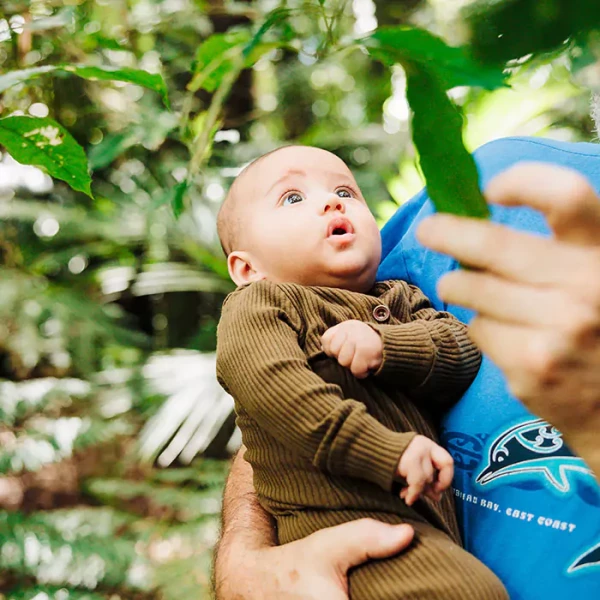
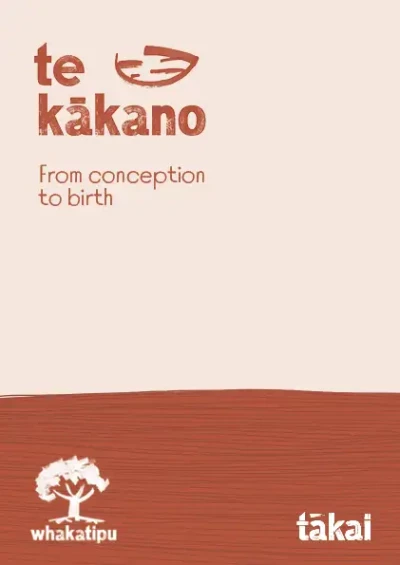 pdf 12 MB
pdf 12 MB
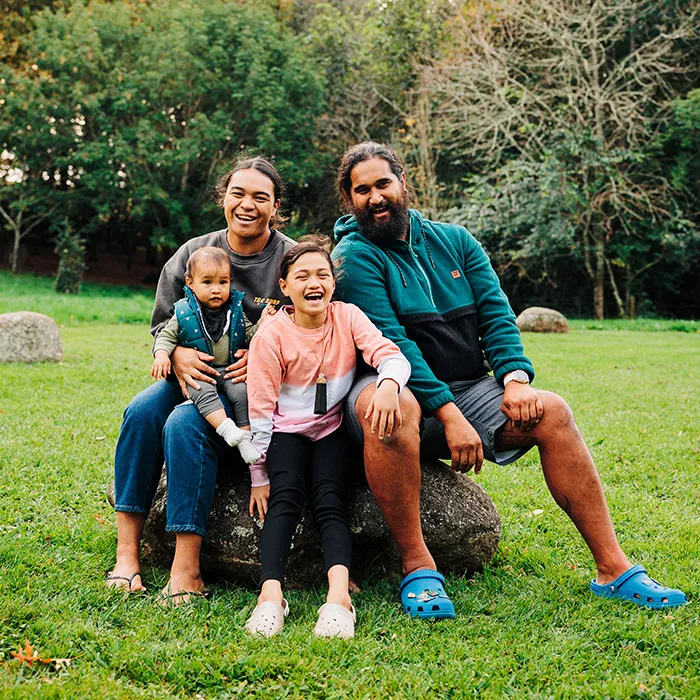
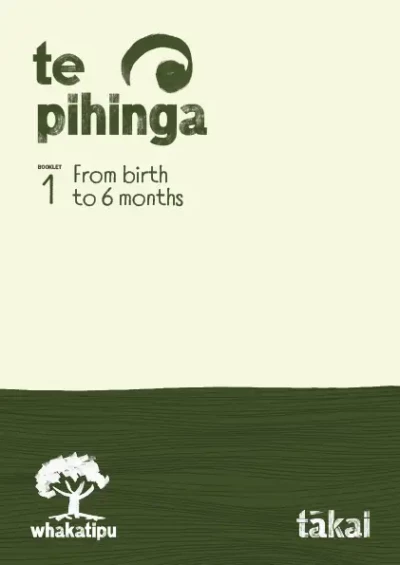 pdf 11 MB
pdf 11 MB
